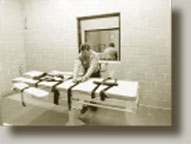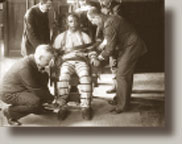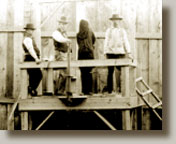
Only 59 nations still practise
capital punishment, and of those nations, only 25 used it in 2008.
Around 137 countries have abolished the death penalty in law or
practice. Among the nations still employing the death penalty, China was
the most prolific with 1,718 executions, followed by Iran with 346,
Saudi Arabia with 102, United States with 37, Pakistan with 36, and Iraq
with 34. Argentina and Uzbekistan abolished the death penalty in 2008
and Belarus was the only European nation to carry out executions.
The death penalty or the capital punishment is often imposed on
people who have committed sexual crimes such as rape, adultery, incest
and sodomy; religious crimes such as apostasy; in Islamic nations drug
trafficking and in China, human trafficking; various authoritarian
states enforced the death penalty as a means of political oppression.
Except for countries that had state laws strictly forbidding it, the
capital punishment has been practised literally everywhere. It is a
subject of heated debate and much controversy to date. In medieval and
early modern Europe, before the development of modern prison systems,
the death penalty was also used as a generalized form of punishment.
Over the years the emphasis on finding more humane methods of
execution grew. France developed the guillotine for this reason in the
final years of the 18th century, Britain banned drawing and quartering
in the 19th. The U.S introduced the electric chair and the gas chamber
as alternatives to hanging and finally lethal injection. But some
countries still practise extreme methods such as stoning.
But as resistance to such severe source of punishment various
organizations - like Amnesty International - have started to work
towards the abolition of capital punishment, based on human rights
concept. By February 1, 2009, 92 countries had abolished capital
punishment. The European Union and the Council of Europe both strictly
require member states not to practise the death penalty.
The arguments about the death penalty include the opponents arguing
about wrongful convictions that would lead to executions of innocent men
and the fact that it violates human rights. Supporters believe that the
penalty is justified for murderers by the principle of retribution, that
life imprisonment is not an equally effective deterrent.
The capital punishment is derived from Latin capitalis meaning
regarding the head’. Consequently a capital crime was originally one
punished by the severing of the head. One method of execution since
firearms came into common use has almost invariably been firing squad.
Lethal injection
 The
convicted felon is usually bound to a gurney and a member of the
execution team positions several heart monitors on his skin. Two needles
- one a back-up - are then inserted into veins, usually in the arms. The
convicted felon is usually bound to a gurney and a member of the
execution team positions several heart monitors on his skin. Two needles
- one a back-up - are then inserted into veins, usually in the arms.
Long tubes connect the needle to several intravenous drips. The first
is a harmless saline solution that is started immediately.
Then, sodium thiopental - an anesthetic, which puts the inmate to
sleep. Next pavulon or pancuronium bromide, which paralyzes the entire
muscle system and stops breathing.
Finally, potassium chloride stops the heart. Death occurs while the
felon is still unconscious.
Electrocution
 The
first electric chair was built in 1888, by the state of New York. The
felon is usually shaved and strapped to a chair with belts that cross
his chest, groin, legs, and arms. The
first electric chair was built in 1888, by the state of New York. The
felon is usually shaved and strapped to a chair with belts that cross
his chest, groin, legs, and arms.
A metal skullcap-shaped electrode is attached to the scalp and
forehead over a sponge moistened with saline.
An additional electrode, moistened with conductive jelly is attached
to the prisoner’s leg and the prisoner is blindfolded. A jolt of between
500 and 2000 volts, lasting for about 30 seconds, is administered.
Lethal gas
 The
felon is strapped to a chair in an airtight chamber. Below the chair
rests a pail of sulfuric acid. A long stethoscope is typically affixed
to the inmate so that a doctor outside the chamber can pronounce death. The
felon is strapped to a chair in an airtight chamber. Below the chair
rests a pail of sulfuric acid. A long stethoscope is typically affixed
to the inmate so that a doctor outside the chamber can pronounce death.
Once everyone has left the chamber, the room is sealed.
The warden then gives a signal to the executioner who flicks a lever
that releases crystals of sodium cyanide into the pail.
This causes a chemical reaction that releases hydrogen cyanide.
Hanging
 The
inmate may be weighed the day before the execution, and a rehearsal is
done using a sandbag of the same weight as the prisoner. This is to
determine the length of ‘drop’ necessary to ensure a quick death. If the
rope is too long, the inmate could be decapitated, and if it is too
short, the strangulation could take as long as 45 minutes. The
inmate may be weighed the day before the execution, and a rehearsal is
done using a sandbag of the same weight as the prisoner. This is to
determine the length of ‘drop’ necessary to ensure a quick death. If the
rope is too long, the inmate could be decapitated, and if it is too
short, the strangulation could take as long as 45 minutes.
The rope must be boiled and stretched to eliminate spring or coiling.
The knot should be lubricated with wax or soap to ensure a smooth
sliding action. Immediately before the execution, the prisoner’s hands
and legs are secured and blindfolded.
The noose is placed around the neck. A trap-door is opened and the
prisoner falls through. Death occurs by a rapid fracture-dislocation of
the neck.
Firing Squad
 The
inmate is typically bound to a chair with leather straps across his
waist and head, in front of an oval-shaped canvas wall. The chair is
surrounded by sandbags to absorb the inmate’s blood. A black hood is
pulled over the head. The
inmate is typically bound to a chair with leather straps across his
waist and head, in front of an oval-shaped canvas wall. The chair is
surrounded by sandbags to absorb the inmate’s blood. A black hood is
pulled over the head.
A doctor locates the inmate’s heart with a stethoscope and pins a
circular white cloth target over it. Standing in an enclosure 20 feet
away, five shooters are armed with .30 caliber rifles loaded with single
rounds. Each of the shooters aims his rifle through a slot in the canvas
and fires at the inmate.
Some obsolete forms of execution
 Beating,
beheading, boiling, burying, cauldron, crucifixion, drowning, pendulum,
pressing, shot by arrows, skinning, burning at the stake, starvation,
thrown from a great height, blown from a cannon. Beating,
beheading, boiling, burying, cauldron, crucifixion, drowning, pendulum,
pressing, shot by arrows, skinning, burning at the stake, starvation,
thrown from a great height, blown from a cannon.
Death by insects - The sentenced was staked to the ground,
smeared with something sweet like honey, and left out to eventually be
eaten by insects.
Eaten by animals - The sentenced was thrown into an arena with
lions. Used mostly in ancient Rome.
Stoning - Rocks were thrown at the sentenced until he died.
Still in practice in some Islamic countries. |

